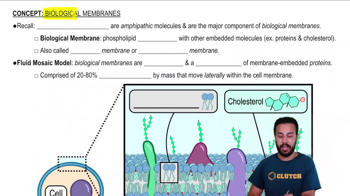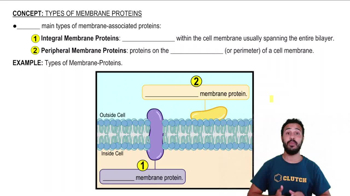Multiple Choice
Which of the following is not a function of membrane proteins?
2548
views
 Verified step by step guidance
Verified step by step guidance Verified video answer for a similar problem:
Verified video answer for a similar problem:



 3:05m
3:05mMaster Types of Membrane Proteins with a bite sized video explanation from Bruce Bryan
Start learning